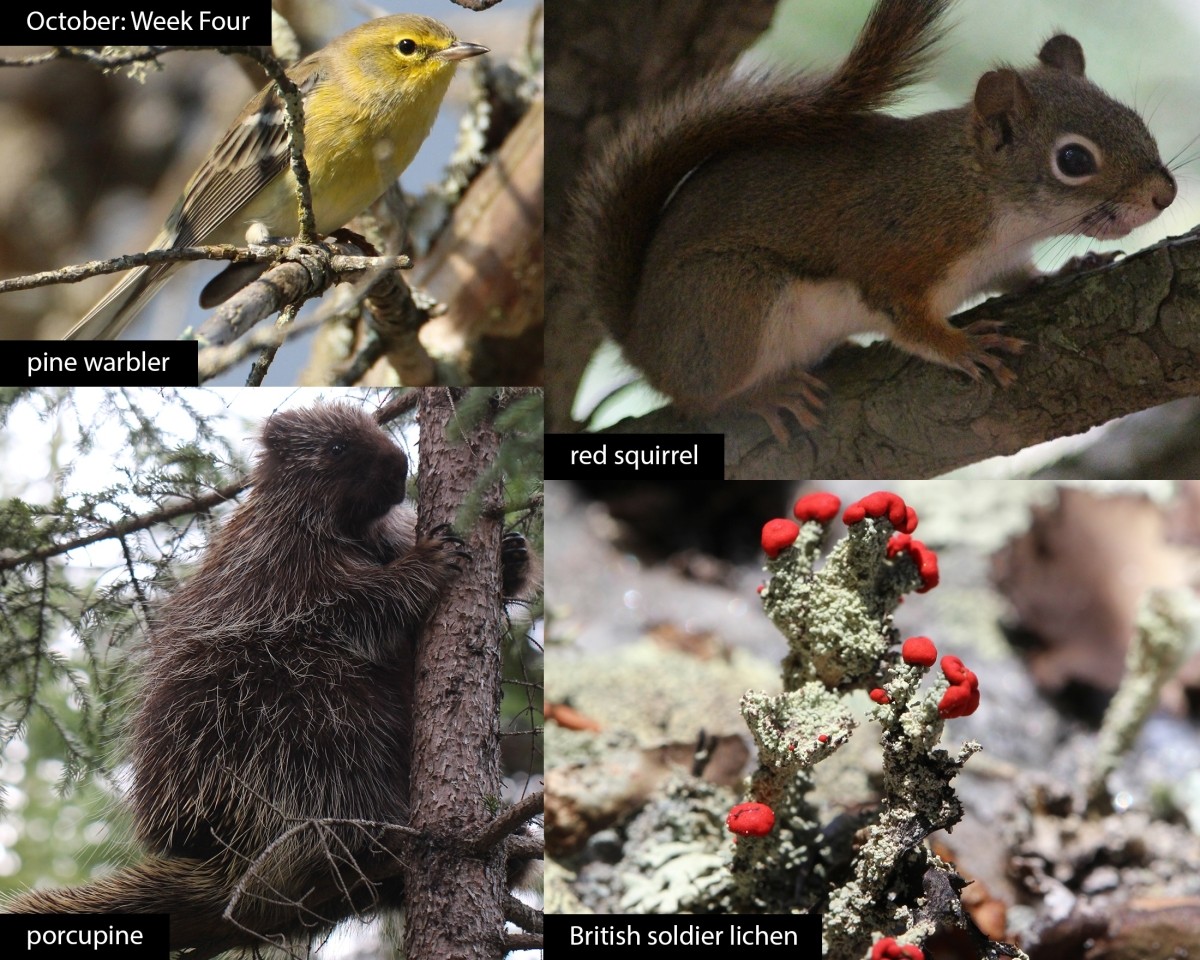This week in the woods, a pine warbler in its weathered fall plumage gleaned insects from a white pine snag. Like the yellow-rumped warbler discussed last week, it may overwinter in New England; while it eats insects first and foremost, only this one North American wood-warbler can eat high volumes of seeds. When insect abundance decreases in the cooler months, the bird’s gizzard enlarges. This alteration of the muscular, food-grinding part of the stomach – as well as a bill larger than other warblers’ – allow it to process more of the harder food.
After varied summer meals of fungi, fruit, insects, eggs, and baby birds, the red squirrel makes a transition like the pine warbler does, to a diet primarily of conifer seeds. During the autumn, a single red squirrel can cache as many as 15,000 still-green spruce, fir, pine, and hemlock cones in middens – sites for both cold storage and cone scales discarded during feeding.
Porcupines have also shifted their feeding behavior, from seeking forbs and grasses on the ground to feeding in the canopy, sometimes spending weeks at a time in the same tree – likely a hemlock but maybe a basswood, sugar maple, beech, or oak. Porcupines’ feet have strong, curved nails and bumpy, furless pads well-adapted for climbing, but the bumbling rodents nevertheless still fall out of trees and break bones (and even die). September and October mark the periods for growing insulating underfur for the winter and also for mating – an affectionate ritual that involves the male urinating on the female and careful choreography to avoid injury from quills. Porcupines will lose about a quarter of their weight between November and April.
This British soldier lichen endured both drought and direct sunlight near the summit of Black Mountain in New Hampshire. In a 2019 Outside Story essay, Meghan McCarthy McPhaul reminds us that lichens result from an intricate relationship between a fungus and an alga or a cyanobacterium. British soldiers take common name, as you might guess, from the historic “redcoat” uniform and their Latin name from their fungal partner, Cladonia cristatella, which has a symbiotic relationship with the alga Trebouxia erici. In The Forest Unseen, biologist David George Haskell remarks upon the dissolution of the fungus and alga’s individualities: “Lichenous fungi can be grown in the lab without their partners, but these widows are malformed and sickly. Similarly, algae and bacteria from lichens can generally survive without their fungal partners, but only in a restricted range of habitats.… ‘Alone’ is not an option.”
What have you noticed in the woods this week? Submit a recent photo for possible inclusion in our monthly online Reader Photo Gallery.


